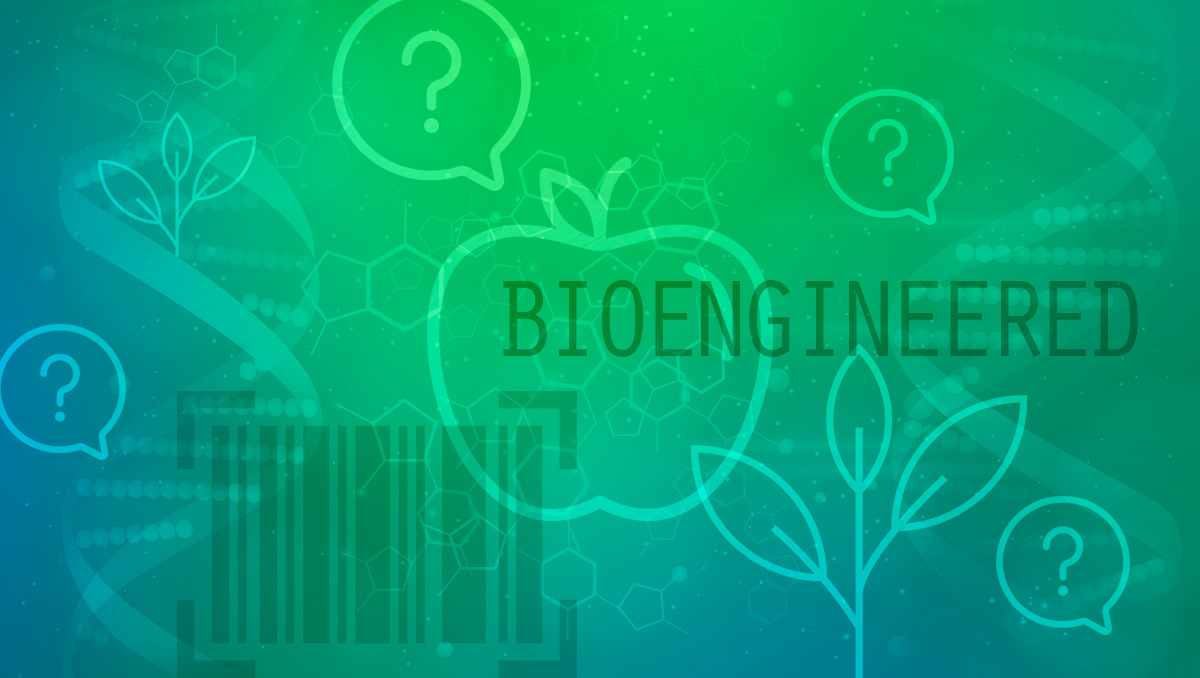
Labeling for Bioengineered Food Ingredients
|
Product Lifecycle Management
|
Food & Beverage
Posted By:
Suzana Tripologos
What are Bioengineered Food Ingredients, and Which Labels Do You Need?
Bioengineered foods, genetically modified organisms, genetic engineering—consumers hear these terms all around them but often don't really know what they mean. It's becoming increasingly important for manufacturers to communicate the nature of their products and ingredients clearly and transparently. It's also now a regulatory must-have to easily evaluate if and when disclosing a bioengineered ingredient is necessary.
Since January 2022, ingredients and foods that meet the definition of bioengineered food must include a disclosure on their package or label in the US.
Labeling bioengineered products clearly and accurately gives your consumers more control over their choices about environmental impacts and personal health. Technology can help you eliminate the non-compliance risk that might arise from mislabeled products and lead to costly recalls and legal troubles.
Key Takeaways for Bioengineered Food Ingredients and Labeling
This blog will help you understand the evolving definition of bioengineered food, your responsibilities for informing consumers when your products contain it, and how to label it properly.
We'll cover:
- The definition of bioengineered food ingredients
- The evolution of bioengineered food labeling requirements
- Your options for labeling bioengineered food
- Worldwide differences in compliance
- How technology supports compliant bioengineered food ingredient labeling
What Are Bioengineered Food Ingredients?
Here's how the USDA defines bioengineered food: "Food that contains genetic material that has been modified through certain laboratory techniques and for which the modification could not be obtained through conventional breeding or found in nature."
In other words, if an ingredient doesn't derive from conventional breeding or harvesting and arises from genetic alterations in a lab setting, it qualifies as bioengineered food.
Are Bioengineered Foods the Same as GMOs?
So is a bioengineered food ingredient just another name for a GMO? Not exactly.
Companies often use the terms "bioengineered" and "GMO" interchangeably in their marketing, but according to Hudson Alpha, bioengineered food is a little more specific. "Genetic modification" could refer to everything from selective breeding to grafting plants to lab-driven genetic manipulation.
To clear things up, the USDA and other authorities have established that the term bioengineering refers to a specific type of genetic modification, where humans add or silence genes to change the properties of a crop, like its yield, flavor, or durability. That definition is at the center of the USDA's National Bioengineered Food Disclosure Standard, or NBFDS, and it represents a crucial component of consumer-facing communications for food manufacturers.
How Have GMO Labeling and the Disclosure of Bioengineered Food Ingredients Changed Over Time?

The key evolution of GMO labeling and bioengineering disclosure in the US is that before January 2022, companies could provide a label reading "non-GMO" to assuage widespread consumer concerns about genetic modification. From that time on, the use of the non-GMO label has been eliminated in the US. In its place, the new requirements demand that companies disclose bioengineered food ingredients under the narrower definition.
Fortunately, the Agricultural Marketing Service (AMS) maintains a list to help you identify which products are bioengineered and determine if you fall within the labeling requirements. And if you're unsure, the USDA's Disclosure Determination Tool enables you to work through a decision tree to discover if you need to communicate your bioengineered ingredients to consumers.
Bioengineered and GMO Labeling Options

If your ingredients or food products meet the definition of bioengineered food, you'll need to include a disclosure on your packaging or label. That disclosure can take several forms:
- The Bioengineered Symbol in color or black and white, reading either "Bioengineered" or "Derived from bioengineering"
- A text disclosure reading "Contains a bioengineered food ingredient"
- An electronic or digital link like a QR code that directs customers to a website with more information
- A phone number consumers can text for further details
- For small manufacturers, a URL that directs customers to a website with information on their bioengineered food ingredients
You can get a high-level view of the labeling requirements for bioengineered food here.
What if My Bioengineered Food Ingredients Labeling is not Compliant?
It's crucial that you follow the requirements for labeling bioengineered foods. Otherwise, resolving compliance issues will increase your time to market and add extra cost burdens. Non-compliance also opens your business up to customer complaints, recalls, or potentially even lawsuits.
Solutions like Trace One Regulatory Compliance by Trace One help you mitigate those risks by giving your internal teams access to a robust and regularly expanding library of ever-changing global legislation.
What Are the Differences in Bioengineered Food Ingredient Labeling Compliance Around the World?

Despite the prominence of the USDA's standards for bioengineered food ingredient labeling, different countries have different compliance standards. According to the Center for Food Safety, 64 countries around the world require labeling of genetically engineered foods.
With such a vast array of different regulatory frameworks and labeling requirements, companies need solutions that can help them keep these standards organized and their products compliant.
How Can Technology Ensure Bioengineered Food Ingredients Labeling is Compliant?

Technology like Trace One Devex PLM improves compliance by integrating regulatory and labeling requirements into the product lifecycle management process. Trace One Devex PLM features the Regulatory Compliance Module with embedded controls that introduce automated checks based on region. Those controls help eliminate oversights based on human error or manual input and ensure you generate compliant labels according to regional requirements—all within one system.
Meanwhile, Trace One Regulatory Compliance can help you simplify global compliance across your product portfolio in the face of numerous regulatory bodies and ever-changing international legislation. Trace One's experts manage and maintain REGDATA, our robust food regulatory database, alongside the Food News Monitoring System and Food Law Library to ensure your regulatory teams have access to the latest information. These tools help you reduce the time spent on manual checks and regulatory research, from ingredient requirements to labeling compliance.
Contact Trace One today to learn how we can help you master bioengineered food ingredient labeling.